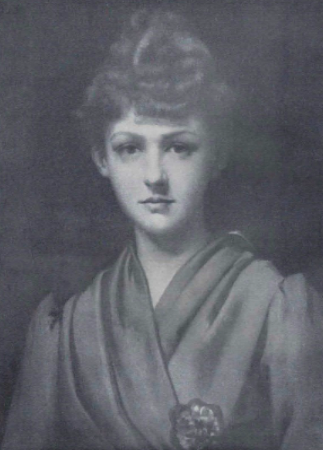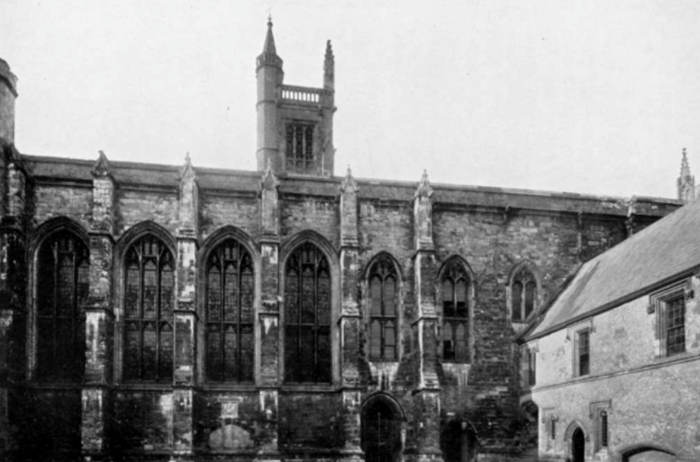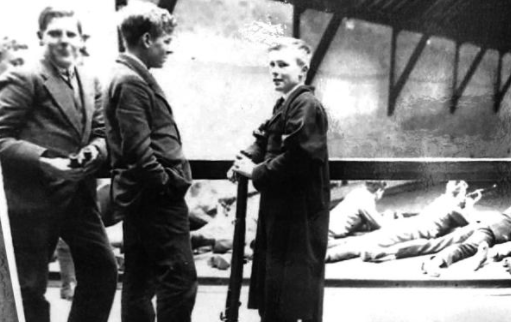1 September 1914 : 2nd Lt George Edward Cecil
- Home
- On This Day
- 1 September 1914 : 2nd Lt George Edward Cecil

George Edward Cecil was killed in action on this day in 1914.
Born on 9 September 1895 off Hanover Square, London, George Cecil was the son of Lord and Lady Edward Cecil (daughter of Admiral Frederick Maxse) and the grandson of the 3rd Marquess of Salisbury (three times Prime Minister).

At the 1901 Census George (age 5) was at home with his mother (age 29) and their seven servants: butler, nurse, cook, kitchen maid, lady's maid, house maid and 18 year old Swiss nursery maid.

At the 1911 England Census, George (age 15) was boarding at Winchester College, Moberly’s House; he had started there two years previously.

He had a lifelong ambition to soldier. After Winchester College (1909-12), age 17, he passed into Sandhurst as a King's Cadet and was gazetted Ensign in his father's old regiment in February 1914. Still only 18, he went to France with his Battalion on 13 August 1914 - it was among the first to arrive.
At first, Cecil acted as Orderly Officer to General Scott Kerr but had command of a platoon by the time the Guards crossed the Aisne at Pommiers during the Retreat.
Exhausted by days of marching, and having received no food since tea the day before, orders came in soon after midnight on 1 September for the 2nd Battalion Grenadiers to take up a rear-guard position just north of Vivieres.

No casualties resulted from the first encounter with enemy patrols at first light and the Battalion retired in good order into the forest of Villers-Cotterets. There was an outburst of firing at about 11am which soon became chaotic forest fighting at point blank range. Part of No 4 Company made a counter attack, suffering badly in the melée and most of its officers and men were either killed, wounded or missing, among them George Cecil. He was killed leading a bayonet charge, sword in hand; he was 8 days short of his 18th birthday.

The story of this engagement and its casualties appears in Fifteen Rounds a Minute, the diaries of Major 'Ma' Jeffreys (J M Craster, McMillan 1976).
This also gives a fascinating account of the visit to the battlefield later that same month by Cecil's mother, and the subsequent visit by Lord Killanin in November 1914 to locate and exhume all those buried in a pit after the action of 1 September. Details are also available from The Grenadier Guards in the Great War of 1914-1918 made available by the Gutenberg Project.

The Commonwealth War Graves Commission burial report confirms the facts. Killanin's party found 94 men, recorded their details where possible and re-buried them under a cross, on the spot. This later became the Guards Grave, Villers Cotterets. They found the four officers who had been killed and were able to identify them by clothing and personal effects; 2/Lt Cecil being identified by the initials on his vest. The officers were originally buried in a hastily purchased plot in the Communal Cemetery at Villers-Cotterets but after the War their remains were brought back to join their men.

2nd. Lt George Edward Cecil, 2 Bn Grenadier Guards
1 September 1914.
The background to the death of Lt George Edward Cecil above is taken from The Western Front Association Publication Private Memorials of the Great War on the Western Front by Barrie Thorpe.
Additional Sources: England Census 1901, 1911; The Grenadier Guards; The Grenadier Guards in the Great War of 1914-1918; The Guards' Grave; UK, Du Ruvigny's. The Kingsgate Sports Centre Rifle Range magazine of Winchester College.





